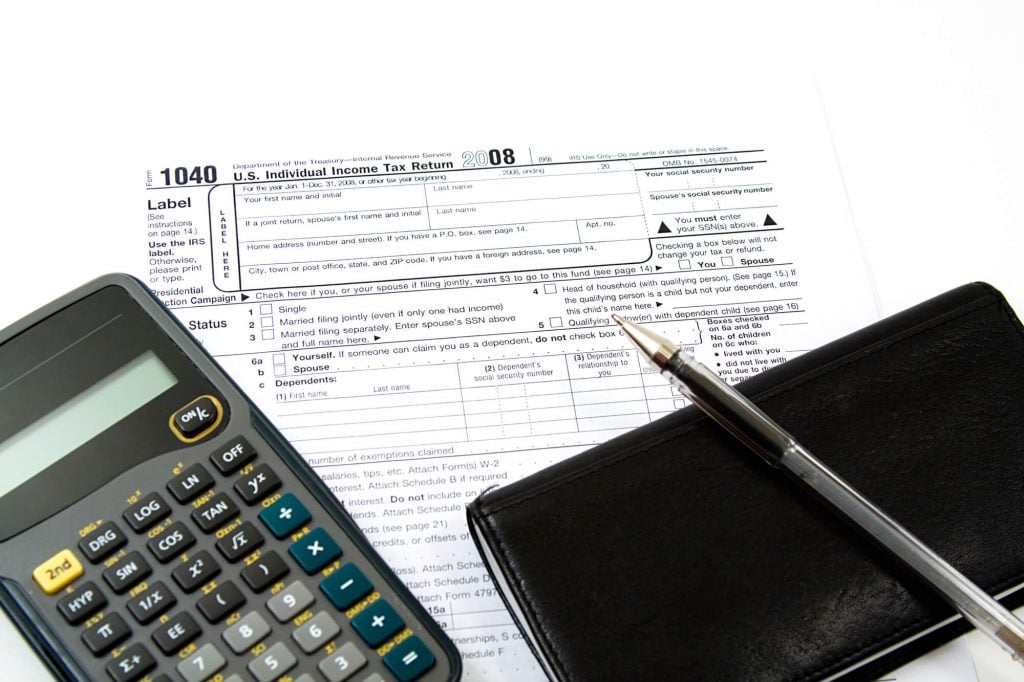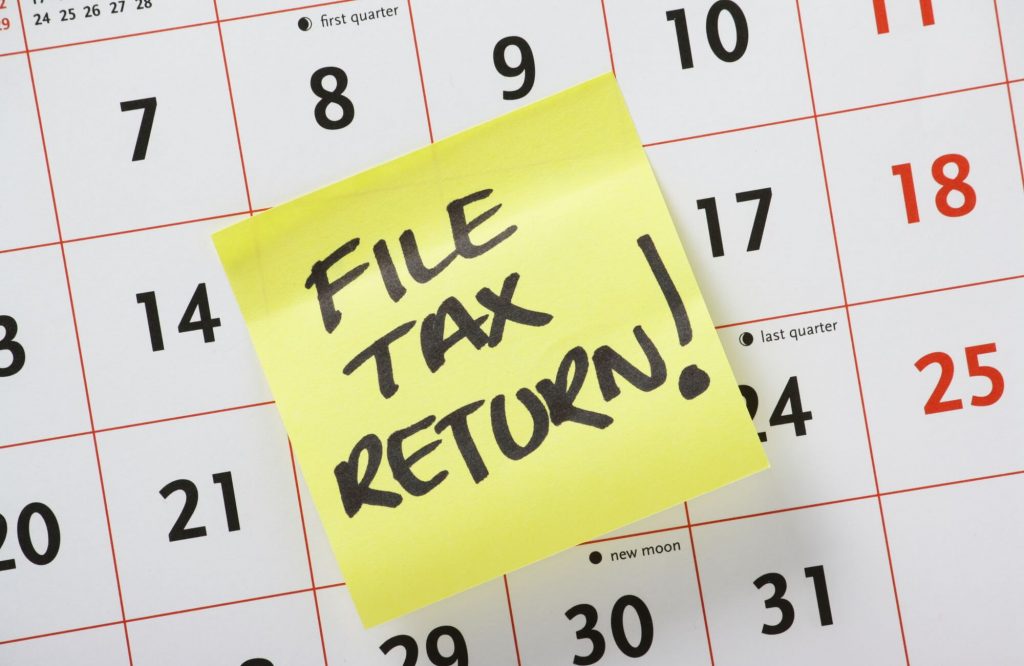Dividends offer investors a form of passive income, and this income must be taxed like any other. But paying taxes on dividends can be tricky because the taxes on dividends depend on several factors, including:
- The type of dividend
- Your taxable income
- Your filing status
To help you navigate these factors, we’ve prepared this helpful guide, which will explain how dividends are taxed, as well as help you determine your current tax bracket.

What Are Dividends?
Some companies choose to redistribute a portion of their profits to their shareholders periodically. This bonus is called a “dividend,” even though dividends will never equal the value of the share itself, they can still outperform the rates of other investment vehicles like treasuries or bonds. While not all companies pay dividends, those that do provide their shareholders a steady, modest income stream.
How Are Dividends Taxed?
The IRS places a tax on dividends, though the dividends tax rate varies according to several factors. Unqualified dividends are taxed based on your ordinary income bracket. Qualified dividends will be taxed at a rate of 0%, 15%, or 20%, depending on your taxable income and filing status.
Qualified vs. Nonqualified Dividends
How do you distinguish qualified vs. nonqualified dividends? That is an important question since it’s the first factor used in determining your tax bracket. Qualified dividends, as we noted, may be taxed at a preferable tax rate compared to nonqualified dividends. But for a dividend to be considered “qualified,” it must meet specific criteria laid out by the IRS. If you’re wondering if your dividend is qualified, ask yourself these three questions:
1. Who Paid the Dividend?
A qualified dividend must be paid by one of the following:
- A U.S. company
- A foreign corporation incorporated on U.S. soil
- A foreign corporation whose country signed an income tax treaty
- A company whose shares get traded on an American exchange
Admittedly, this is broad, but it will be the first step in determining whether or not your dividend is considered qualified.
2. How Does the IRS View My Dividend?
This question may sound confusing, but the IRS stipulates that qualified dividends must not match the criteria for nonqualified dividends. That is where it gets a little tricky, and the IRS specifies several examples of dividends NOT considered qualified. These include:
- Capital gain distributions
- Dividends from tax-exempt corporations
- Dividends paid on employee stock option programs
- Dividends paid by master limited partnerships
- Payments made instead of dividends
These are just a few of the most common reasons that a dividend would be considered unqualified. There are many other rules and exceptions laid out in IRS Publication 550. You may wish to consult a tax professional if you have questions regarding a specific tax situation.
3. How Long Have I Owned the Stock?
Finally, qualified dividends must meet specific time criteria. Again, this is going to sound a bit confusing since the rule is slightly different for common and preferred stock. Common stock refers to typical companies that trade on the market, while preferred stocks work a bit more like a bond than a traditional stock.
For a common stock dividend to be qualified, the investor must own the stock for over 60 days of the 121-day period that begins 60 days before the ex-dividend date. It’s not as confusing as it sounds. When a company pays a dividend, the 60 days before and after the dividend gets paid become these 121 days. Investors must own the stock for more than 60 days out of this window.
For example, if the dividend payment is a month away, you will need to own the stock for that month and then hold onto that stock for an additional month or so in order to meet your requirement. Preferred stock dividends must meet these same criteria, though investors must own the stock for 90 days of 181 days analogous to that above.

Qualified Dividends Tax Rate: A Quick Guide
If your dividends meet the criteria above, then your qualified dividends can place you in a more favorable tax bracket. Rather than paying your regular income tax rate, your qualified dividends tax rate will be determined by (1) your filing status and (2) your taxable income.
To make this a bit clearer, we’ve created this helpful guide. Simply find your filing status, and then your tax rate will be determined by your total taxable income.
Single
The “single” filing status is an umbrella term for anyone who is unmarried, though this also extends to those who do not live with their spouse for the last six months of the tax year.
- Up to $40,000: 0%
- $40,001 to $445,850: 15%
- Over $445,850: 20%
If possible, taxpayers will generally find it more advantageous to file as head of household or claim qualifying widow/widower status.
Head of Household
Those who have dependents or live-in relatives and/or pay more than half of household expenses can file as head of household (HOH), which offers the following tax rates for dividends:
- Up to $54,100: 0%
- $54,101 to $473,750: 15%
- Over $473,750: 20%
This can be a more favorable filing status as compared to filing as “single,” and the tax rates for qualified dividends join other tax breaks associated with the HOH filing status.
Married Filing Jointly
Married couples have the option of filing jointly or separately, and in most cases, will see the most benefit from filing jointly. Married couples will find themselves in the following tax brackets for their dividends:
- Up to $80,800: 0%
- $80,801 to $501,600: 15%
- $501,600: 20%
That is one of many advantages of filing jointly, which is why most tax experts will recommend that married couples file jointly in all but a few cases.
Married Filing Separately
Married couples can file separately, which can be a wise move if one partner is in a lot of debt, or if you wish to take advantage of certain tax cuts. Each spouse will find themselves in one of the following tax brackets:
- Up to $40,400: 0%
- $40,001 to $250,800: 15%
- Over $250,801: 20%
Again, most couples will see the most benefit to filing jointly, so be sure to carefully weigh the pros and cons of your filing status.
How to Report Tax on Dividends
Every year, you will receive a Form 1099-DIV (sometimes called a Schedule K-1) from your broker or any financial entity that paid you at least $10.00 in dividends. This form will document what you were paid and determine whether your dividends were qualified or nonqualified. This information will then factor into your annual income tax return. If you earned more than $1,500 in dividends, you need to fill out a Schedule B.
Some companies offer a dividend reinvestment plan (DRIP), which allows you to reinvest your dividend payments back into the company as additional shares of stock. If you took advantage of this option, you would still need to report the value of these dividends to the IRS. Additionally, you’ll need to report dividends from investments you sold during the year.
How to Prepare for Tax on Dividends
Obviously, everyone wants a lower tax bill. You can do several things to give yourself a more favorable tax position if you receive dividends.
Hang on to Your Dividend-Paying Stocks
Remember that, for your dividends to be qualified, you’ll need to hold onto the stock for at least 61 days. While there are other criteria to meet for your dividend to be qualified, hanging onto your stock will ensure you meet the requirements for the length of ownership, and qualified dividends can place you in a lower tax bracket.
At the same time, Warren Buffet cautions investors never to make an investment decision based on taxes alone. Instead, consider your broader investment strategy and choose what fits your financial goals regardless of tax requirements.
Set Aside Estimated Payments
If you’re keeping track of your dividends, you’ll have a very clear idea of what you’ll expect to pay once tax season rolls around. True, this can be more difficult for companies that pay dividends annually. Still, even then, you can generally plan according to previous years and make adjustments based on recent stock performance.
Said differently, don’t spend your entire dividend, but set aside a portion of it to pay for taxes. You might even consider making quarterly, estimated tax payments, which you can calculate using tax software or a tax professional.
Consider a Tax-Advantaged Account
Certain forms of investment accounts can shield you from taxes. A traditional IRA will offer a tax-deferred option, while a Roth IRA will be tax-free. Placing your dividend-paying stocks inside one of these vehicles could minimize your tax debt now and in the future.

Investing in Gorilla Trades Offers Big Dividends
Of course, one of the best investments you can make is in yourself. At Gorilla Trades, we take pride in putting industry-leading tools in the hands of everyday investors. Sign up today, and take a free, 30-day tour of all our exclusive member benefits, including stock picks, research tools, and more. We’ve helped countless others reach their financial potential, and we can help you too.




